Abstract
Ten per cent of patients with angina pectoris have normal coronary arteries and cardiac function and, despite this reassurance, continue to have chest pain. Since pain of cardiac or esophageal origin is clinically difficult to differentiate, 50 patients with severe chest pain, normal cardiac function, and normal coronary arteriography with ergotamine provocation were evaluated with a symptomatic questionnaire and esophageal function test. On 24-hour esophageal pH monitoring, 23 patients had abnormal reflux, and 27 were normal. There was no difference in the incidence and severity of chest pain, esophageal symptoms, or medication taken between refluxers and nonrefluxers. Ten refluxers and ten nonrefluxers had chest pain on exercise electrocardiography. Thirteen refluxers documented chest pain during the pH monitoring period, and in 12 it coincided with a reflux episode. Fifteen nonrefluxers documented chest pain during the monitoring period, and in only one did it coincide with a reflux episode. Of the 23 refluxers, 12 were treated with medical therapy and 11 by a surgical antireflux procedure, and all followed for two to three years. Ten (91%) of the 11 surgically treated patients are totally free of chest pain compared with five (42%) of the 12 medically treated patients. All 12 patients who had chest pain coincide with a documented reflux episode responded positively to antireflux therapy, eight surgical and four medical. It is concluded that 46% of patients complaining of angina pectoris with normal cardiac function and coronary arteriography have gastroesophageal reflux as a possible etiology. Seventy-three per cent of these patients have total abolition of chest pain by either surgical or medical antireflux therapy. Patients whose experience of chest pain coincided with a documented reflux episode on 24-hour esophageal pH monitoring had a 100% response to medical or surgical therapy. Overall, surgical therapy gave better results (91%) but was associated with an 18% temporary morbidity. Objective evaluation of reflux status and its correlation to the symptom of chest pain by 24-hour pH monitoring allows for selective therapy in these difficult to manage patients.
Full text
PDF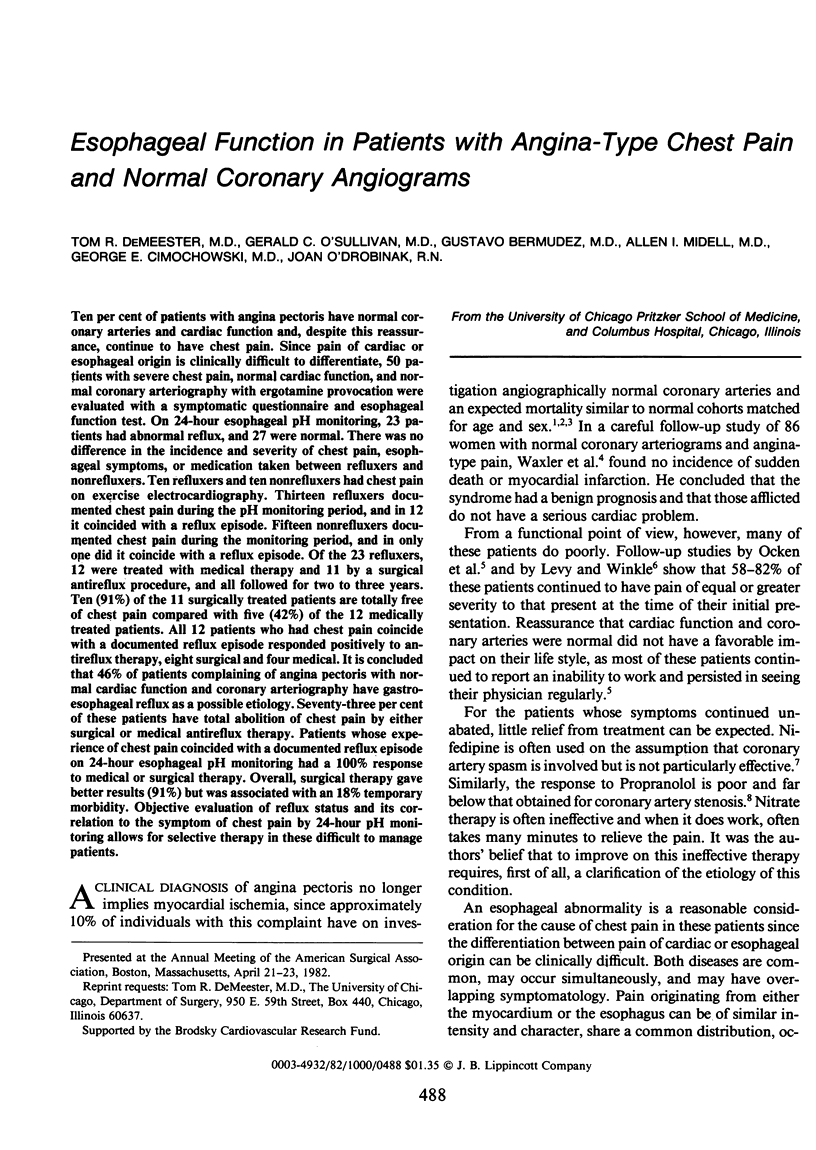
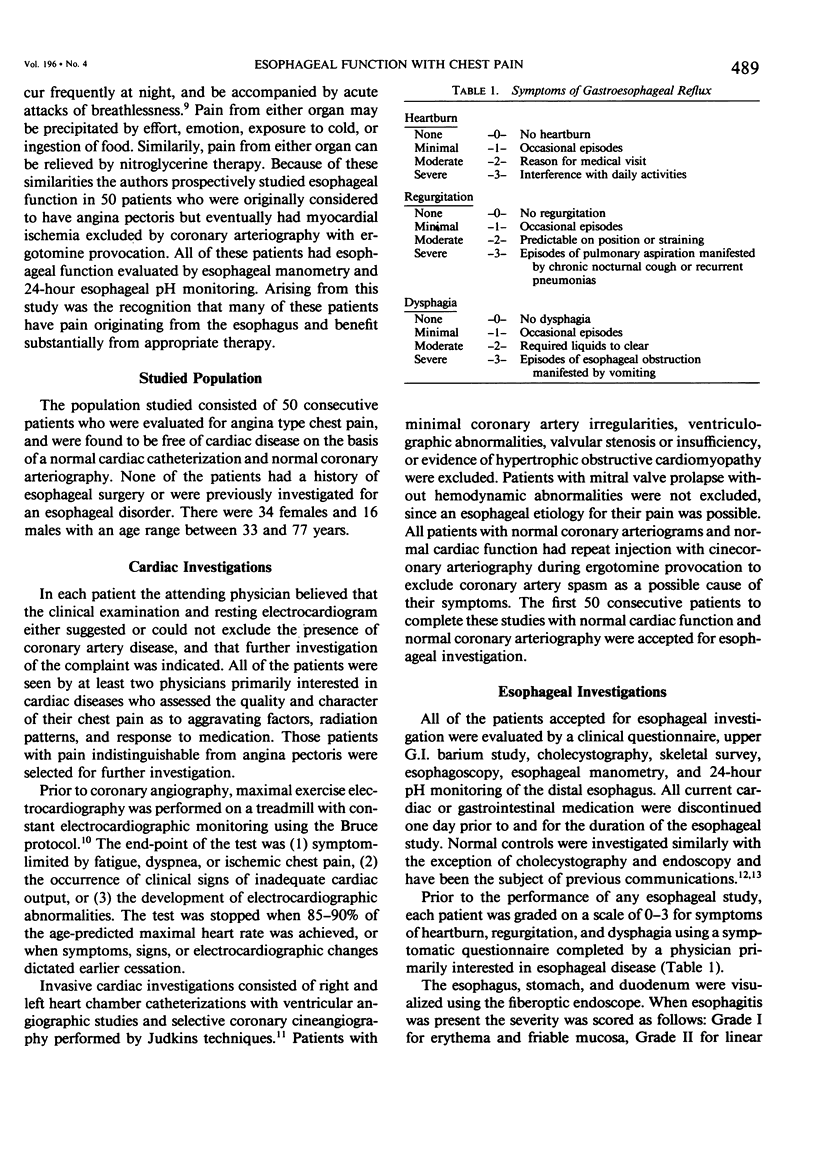
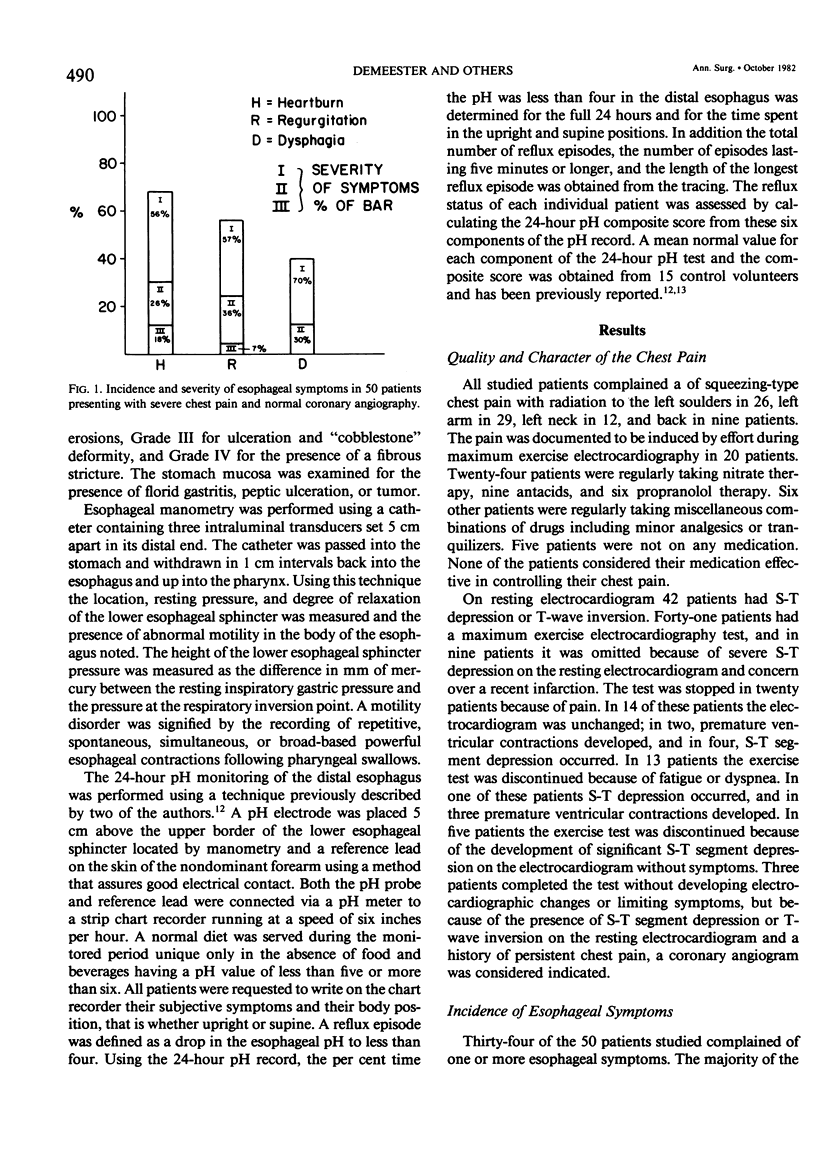
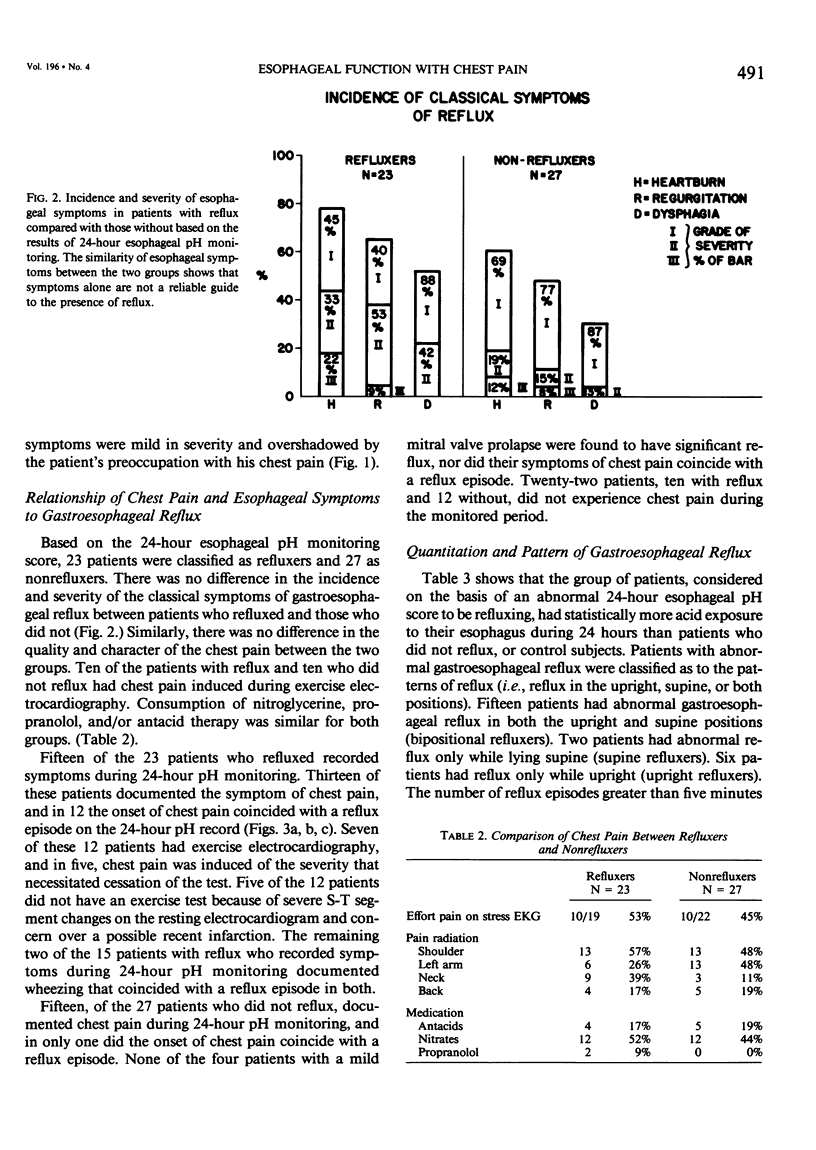
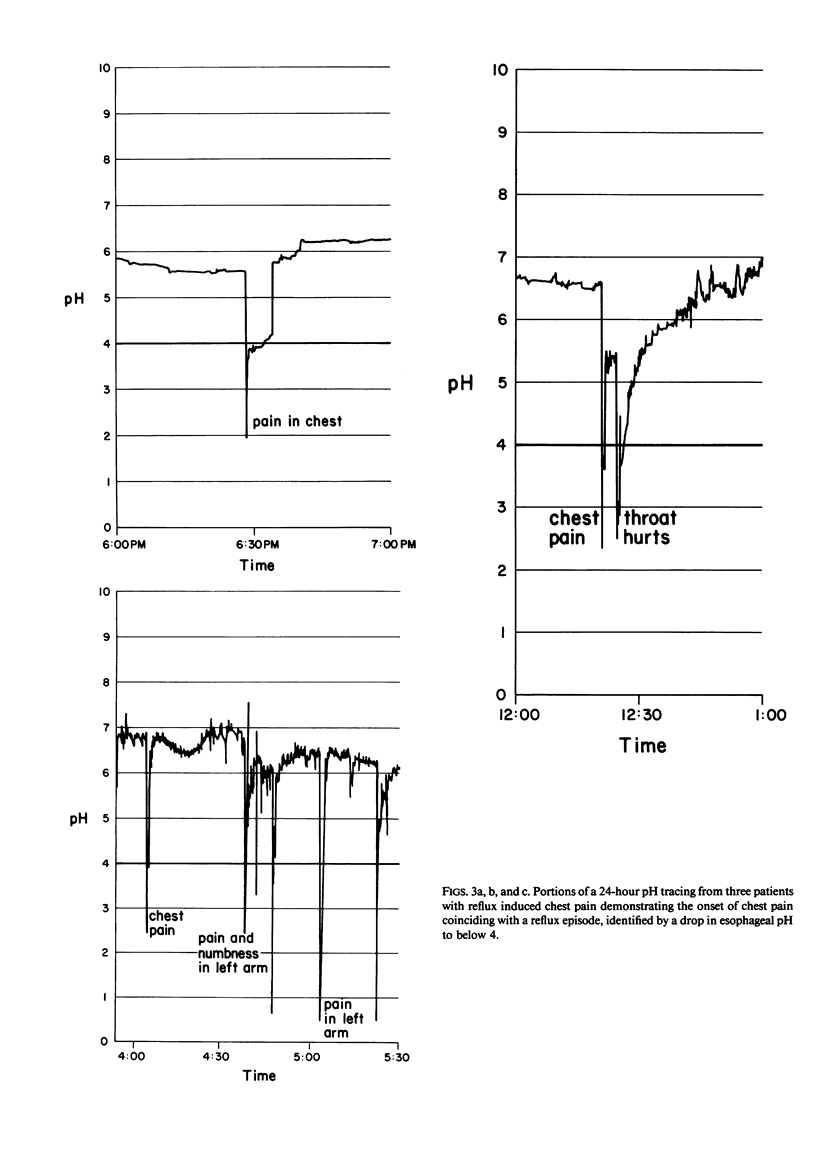
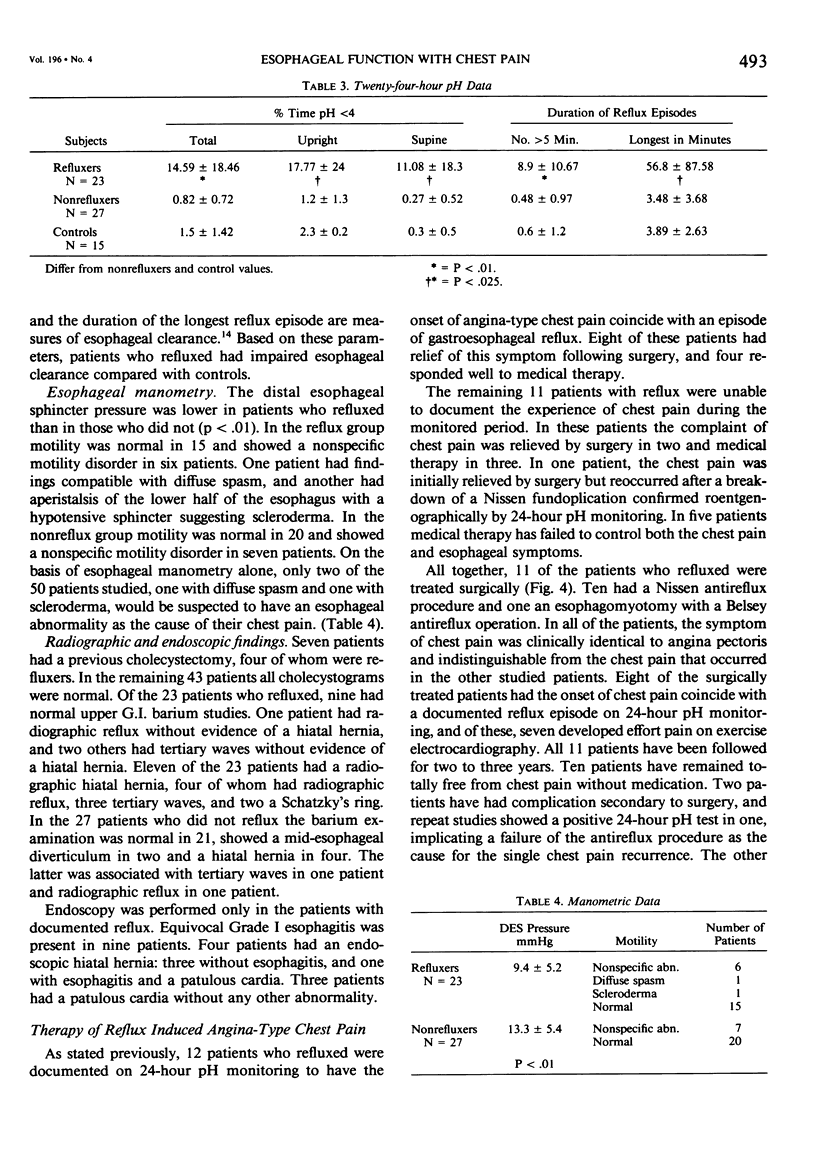
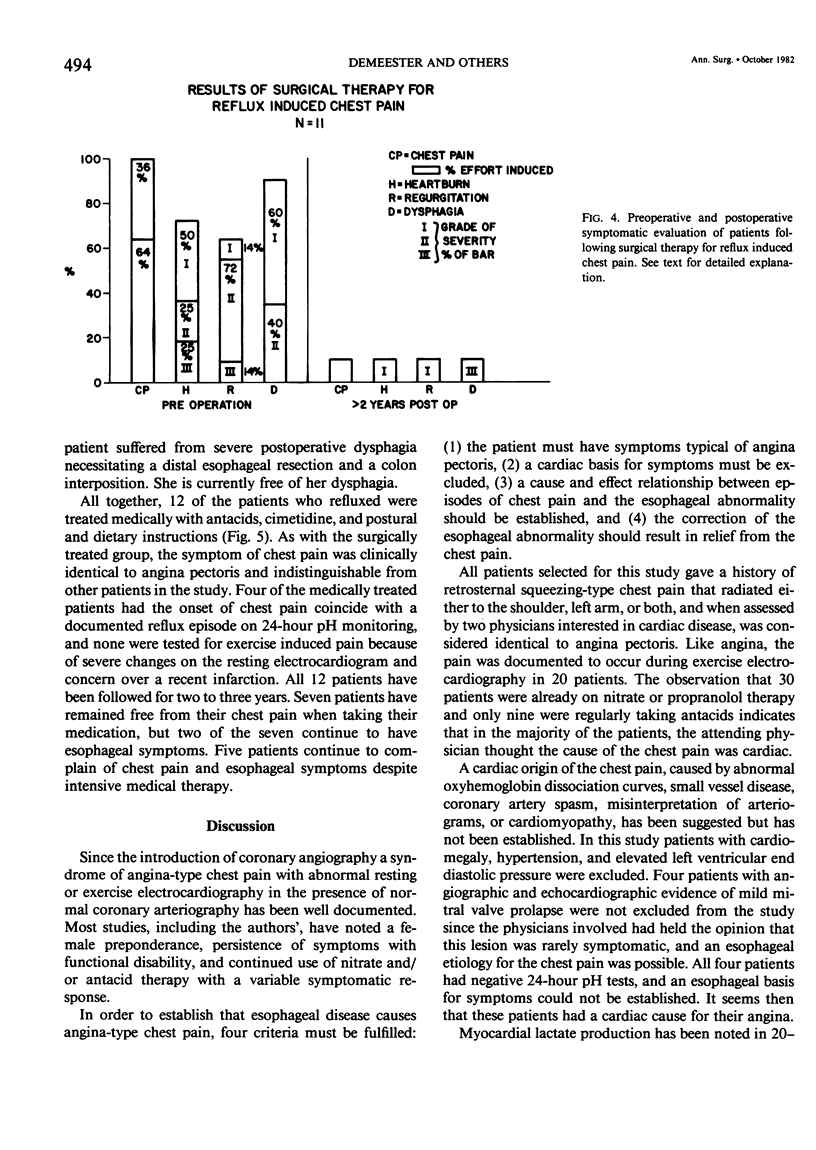
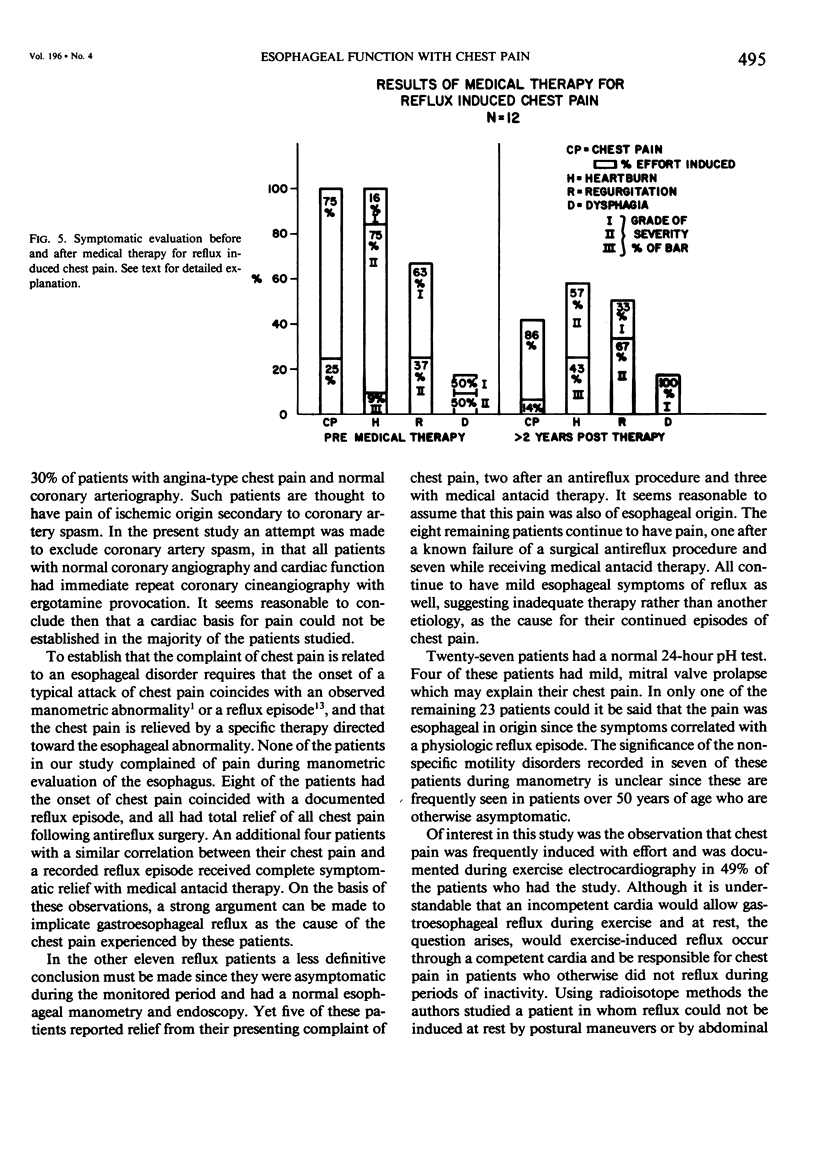
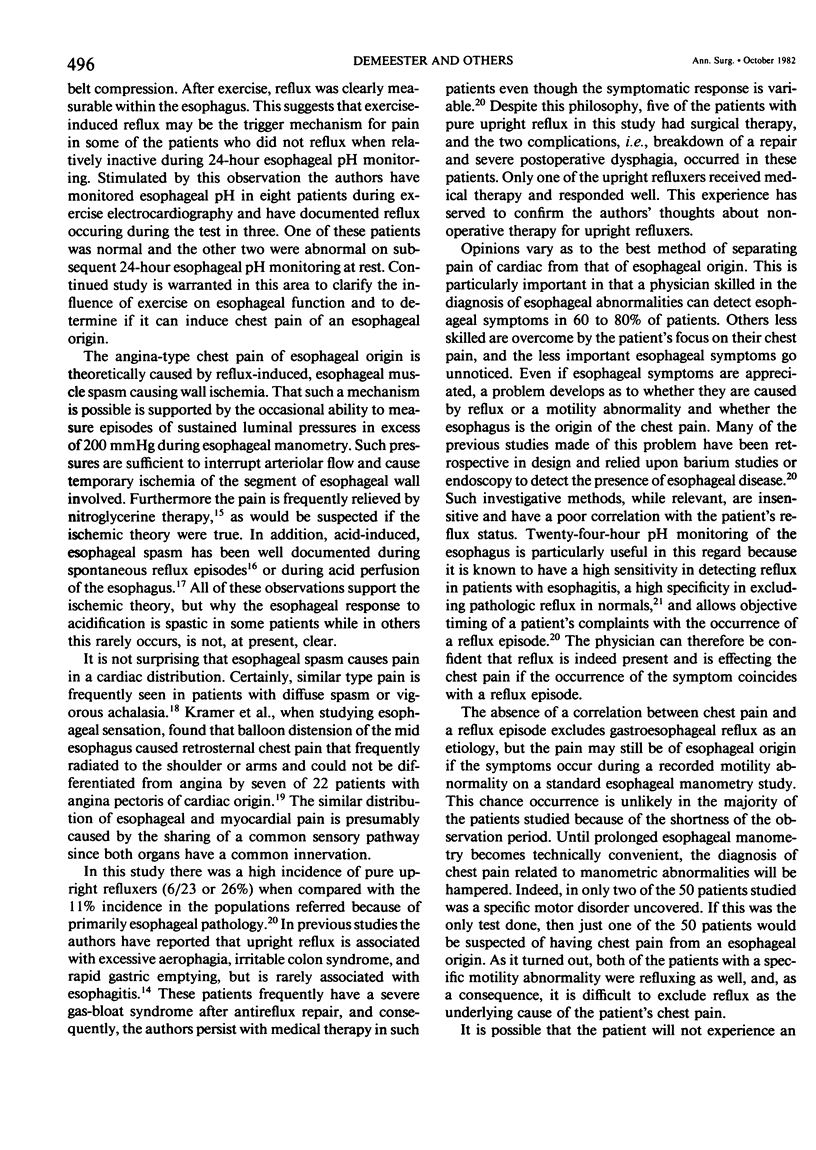
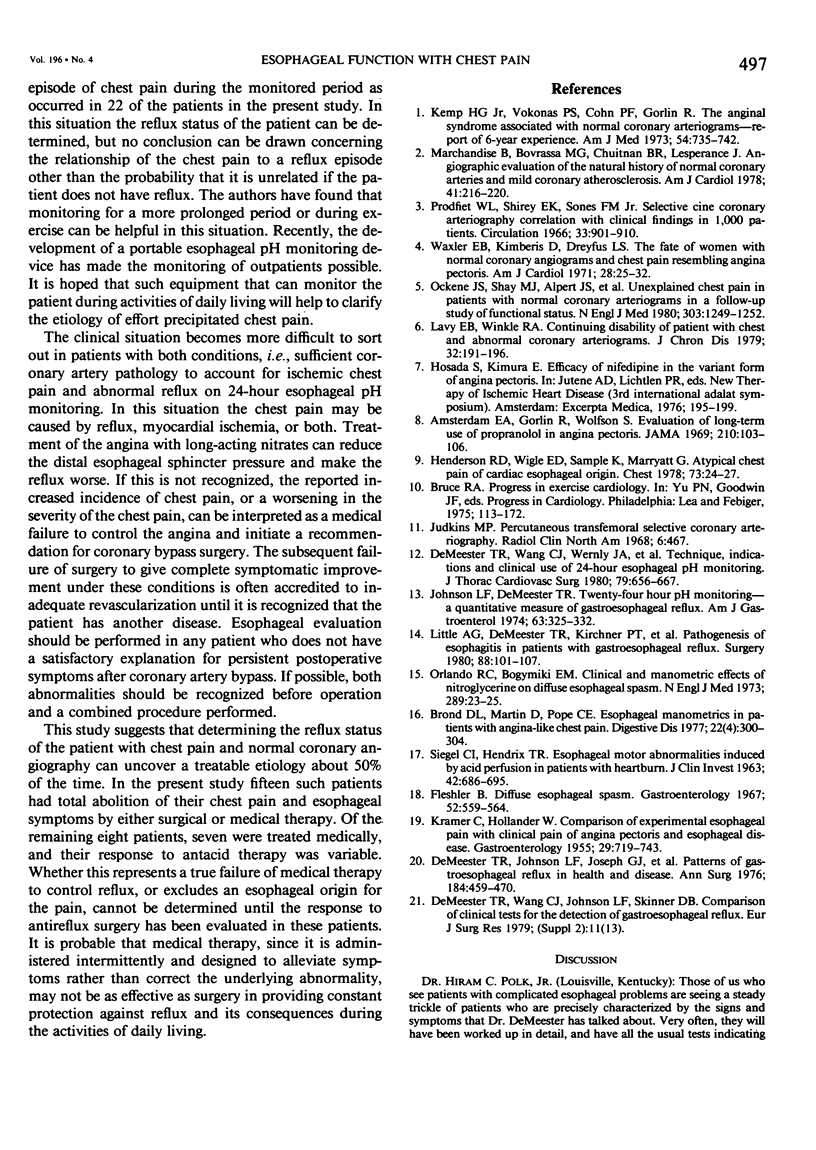
Selected References
These references are in PubMed. This may not be the complete list of references from this article.
- Amsterdam E. A., Gorlin R., Wolfson S. Evaluation of long-term use of propranolol in angina pectoris. JAMA. 1969 Oct 6;210(1):103–106. [PubMed] [Google Scholar]
- Brand D. L., Martin D., Pope C. E., 2nd Esophageal manometrics in patients with angina-like chest pain. Am J Dig Dis. 1977 Apr;22(4):300–304. doi: 10.1007/BF01072186. [DOI] [PubMed] [Google Scholar]
- DeMeester T. R., Wang C. I., Wernly J. A., Pellegrini C. A., Little A. G., Klementschitsch P., Bermudez G., Johnson L. F., Skinner D. B. Technique, indications, and clinical use of 24 hour esophageal pH monitoring. J Thorac Cardiovasc Surg. 1980 May;79(5):656–670. [PubMed] [Google Scholar]
- Demeester T. R., Johnson L. F., Joseph G. J., Toscano M. S., Hall A. W., Skinner D. B. Patterns of gastroesophageal reflux in health and disease. Ann Surg. 1976 Oct;184(4):459–470. doi: 10.1097/00000658-197610000-00009. [DOI] [PMC free article] [PubMed] [Google Scholar]
- Fleshler B. Diffuse esophageal spasm. Gastroenterology. 1967 Mar;52(3):559–564. [PubMed] [Google Scholar]
- Henderson R. D., Wigle E. D., Sample K., Marryatt G. Atypical chest pain of cardiac and esophageal origin. Chest. 1978 Jan;73(1):24–27. doi: 10.1378/chest.73.1.24. [DOI] [PubMed] [Google Scholar]
- Johnson L. F., Demeester T. R. Twenty-four-hour pH monitoring of the distal esophagus. A quantitative measure of gastroesophageal reflux. Am J Gastroenterol. 1974 Oct;62(4):325–332. [PubMed] [Google Scholar]
- Judkins M. P. Percutaneous transfemoral selective coronary arteriography. Radiol Clin North Am. 1968 Dec;6(3):467–492. [PubMed] [Google Scholar]
- KRAMER P., HOLLANDER W. Comparison of experimental esophageal pain with clinical pain of angina pectoris and esophageal disease. Gastroenterology. 1955 Nov;29(5):719–743. [PubMed] [Google Scholar]
- Kemp H. G., Jr, Vokonas P. S., Cohn P. F., Gorlin R. The anginal syndrome associated with normal coronary arteriograms. Report of a six year experience. Am J Med. 1973 Jun;54(6):735–742. doi: 10.1016/0002-9343(73)90060-0. [DOI] [PubMed] [Google Scholar]
- Lavey E. B., Winkle R. A. Continuing disability of patients with chest pain and normal coronary arteriograms. J Chronic Dis. 1979;32(3):191–196. doi: 10.1016/0021-9681(79)90064-x. [DOI] [PubMed] [Google Scholar]
- Little A. G., DeMeester T. R., Kirchner P. T., O'Sullivan G. C., Skinner D. B. Pathogenesis of esophagitis in patients with gastroesophageal reflux. Surgery. 1980 Jul;88(1):101–107. [PubMed] [Google Scholar]
- Marchandise B., Bourassa M. G., Chaitman B. R., Lesperance J. Angiographic evaluation of the natural history of normal coronary arteries and mild coronary atherosclerosis. Am J Cardiol. 1978 Feb;41(2):216–220. doi: 10.1016/0002-9149(78)90159-5. [DOI] [PubMed] [Google Scholar]
- Ockene I. S., Shay M. J., Alpert J. S., Weiner B. H., Dalen J. E. Unexplained chest pain in patients with normal coronary arteriograms: a follow-up study of functional status. N Engl J Med. 1980 Nov 27;303(22):1249–1252. doi: 10.1056/NEJM198011273032201. [DOI] [PubMed] [Google Scholar]
- Orlando R. C., Bozymski E. M. Clinical and manometric effects of nitroglycerin in diffuse esophageal spasm. N Engl J Med. 1973 Jul 5;289(1):23–25. doi: 10.1056/NEJM197307052890106. [DOI] [PubMed] [Google Scholar]
- Proudfit W. L., Shirey E. K., Sones F. M., Jr Selective cine coronary arteriography. Correlation with clinical findings in 1,000 patients. Circulation. 1966 Jun;33(6):901–910. doi: 10.1161/01.cir.33.6.901. [DOI] [PubMed] [Google Scholar]
- SIEGEL C. I., HENDRIX T. R. Esophageal motor abnormalities induced by acid perfusion in patients with heartburn. J Clin Invest. 1963 May;42:686–695. doi: 10.1172/JCI104760. [DOI] [PMC free article] [PubMed] [Google Scholar]
- Waxler E. B., Kimbiris D., Dreifus L. S. The fate of women with normal coronary arteriograms and chest pain resembling angina pectoris. Am J Cardiol. 1971 Jul;28(1):25–32. doi: 10.1016/0002-9149(71)90030-0. [DOI] [PubMed] [Google Scholar]


